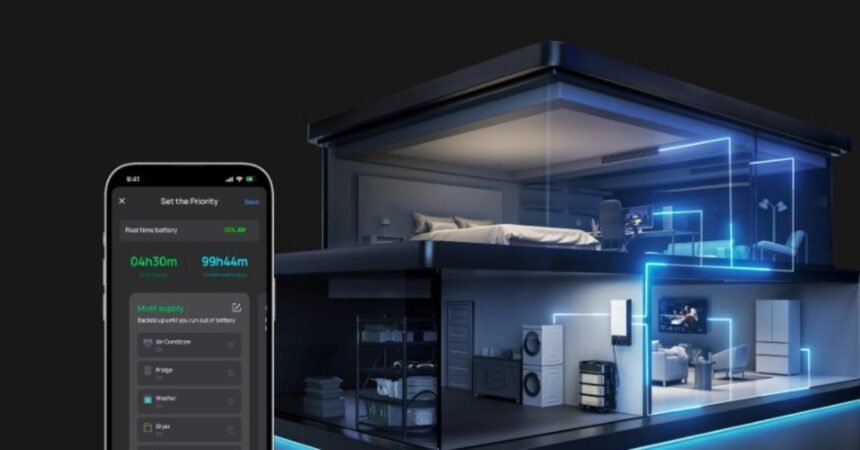Power keeps everything in your home running smoothly — from lights and appliances to heating, cooling, and internet. But when the grid fails, all that comfort disappears in an instant. That’s where a whole home generator comes in. It’s not just a luxury anymore; it’s a practical solution for modern homes that depend on electricity for nearly everything.
Let’s break down how a whole-home backup power system works, why it’s different from smaller portable units, and how it keeps your home powered safely and automatically during an outage.
Why Backup Power Matters More Than Ever
Power outages are becoming more common across the United States. Extreme weather, aging infrastructure, and rising energy demand have made grid interruptions part of everyday life in many regions. For families working remotely, running smart devices, or using medical equipment, losing power is more than an inconvenience — it’s a serious disruption.
A whole home generator offers a long-term solution. It ensures your home stays powered automatically, no matter how long the outage lasts or how widespread the problem is.
Unlike portable generators, which only provide temporary or limited power, a whole-home system is built to keep your entire household functioning — including your heating or cooling system, kitchen appliances, and essential outlets — without any manual effort.
What Exactly Is a Whole-Home Backup Power System?
A whole home generator is an integrated backup power solution permanently connected to your home’s electrical system. It monitors your utility power around the clock, and when it detects an outage, it automatically turns on within seconds, delivering electricity to your home until grid power returns.
Think of it as an invisible safety net for your household’s electrical needs. When the lights go out, your backup system takes over instantly — no cables, no switches, no panic.
Most modern whole-home systems are either fuel-based or battery-based:
- Fuel-based generators run on natural gas or propane, generating electricity on demand.
- Battery-based systems store electricity from the grid or solar panels and release it when needed.
Both types aim to do one thing: keep your home running safely, efficiently, and automatically when the power grid can’t.
The Core Components of a Whole-Home Backup System
To understand how a whole home generator works, it helps to know what’s inside the system. Despite the technology behind it, the setup is straightforward and designed for reliability.
1. The Power Source
The power source is the heart of the system. For fuel-based systems, that means a natural gas or propane engine that drives an alternator to produce electricity. For battery systems, it’s a high-capacity battery bank that stores power for later use.
Fuel-based systems can run indefinitely as long as there’s fuel supply, while battery-based ones can recharge from solar panels or the grid when power returns.
2. The Transfer Switch
The automatic transfer switch (often called ATS) is what makes a whole-home system truly “smart.” It constantly monitors your home’s power supply. When it detects that grid power has gone out, it automatically disconnects your home from the utility line and activates the generator — usually within seconds.
Once the power is restored, the transfer switch safely reconnects your home to the grid and turns off the backup system. This process happens automatically, so you don’t need to touch a thing.
3. The Inverter or Control Module
In battery-based systems, an inverter converts the stored DC power from batteries into AC electricity your home appliances can use. It also regulates the flow of power, ensuring voltage stays stable and safe.
The control module manages the entire process — starting, stopping, and monitoring the system’s performance in real time. Many models now feature smartphone apps that let homeowners check battery levels, fuel status, or output from anywhere.
4. The Energy Storage Unit
Battery-based whole home generators include large lithium-ion or lithium-iron-phosphate batteries. These store power from either solar panels or the grid during normal operation. When the grid goes down, they release that stored energy instantly.
These batteries are durable, long-lasting, and nearly maintenance-free — a major advantage over fuel-powered alternatives.
How It All Works — Step by Step
Here’s how a whole home generator takes over during an outage:
- Monitoring: The transfer switch constantly checks for incoming utility power.
- Detection: When voltage drops or power cuts out entirely, it triggers the system within seconds.
- Activation: The generator (fuel engine or battery inverter) turns on automatically.
- Transfer: The switch isolates your home from the grid to prevent backfeeding (which can endanger utility workers).
- Power Delivery: The generator feeds electricity into your home circuits, powering appliances, lights, and HVAC.
- Restoration: When the grid comes back, the system automatically switches back and shuts down the generator.
This all happens seamlessly — often so quickly that many homeowners don’t even realize the power went out.
Whole Home Generator vs. Portable Generator
While both options supply backup power, the difference in scale, safety, and convenience is dramatic.
A portable generator requires manual setup, refueling, and extension cords. It typically runs a few small devices — maybe your fridge, a lamp, and your Wi-Fi router. It also needs to be operated outdoors due to the risk of carbon monoxide poisoning.
A whole home generator, on the other hand, is fully automatic and built to handle much larger loads. It can power your entire electrical panel or specific high-demand systems like central air conditioning, water pumps, and ovens.
The other key difference is fuel management and noise. Fuel generators are loud and require constant refueling. Battery systems are nearly silent, maintenance-free, and recharge automatically through the grid or solar energy.
Integration with Solar Power
One of the biggest advances in home backup systems is the ability to pair a whole home generator with solar energy.
Solar panels can charge your battery during the day, even while the grid is down. The stored energy then powers your home at night or during cloudy conditions. This combination creates a self-sustaining energy loop that minimizes dependence on fossil fuels and the public grid.
For homeowners who already have solar panels, adding a backup battery is a natural next step — it ensures that your solar system doesn’t shut down when the grid does. That means you can keep using your solar energy even during an outage.
How Long Can a Whole-Home System Run?
The duration depends on system type and capacity. Fuel-based whole home generators can run indefinitely as long as they have access to propane or natural gas. Battery-based systems, depending on size, can keep your essentials running anywhere from several hours to several days.
With solar integration, you can achieve near-continuous operation, as the panels recharge the batteries daily. This makes modern systems especially valuable for areas prone to long blackouts or unreliable utility infrastructure.
Maintenance and Longevity
Maintenance is another key difference between traditional fuel generators and battery systems.
Fuel-based models require periodic oil changes, filter replacements, and engine checks — much like a car. They’re reliable but demand attention to stay in good shape.
Battery-based whole home generators require virtually no maintenance. They have fewer moving parts, no fuel, and no emissions. Most come with warranties of 10 years or more and can last well beyond that with proper use.
Their long life, low upkeep, and quiet operation make them ideal for residential neighborhoods and eco-conscious homeowners.
The Advantages of Going Whole-Home
A whole home generator is about more than keeping the lights on — it’s about maintaining your lifestyle when everything else stops. It keeps your refrigerator cold, your HVAC system running, your Wi-Fi online, and your home secure.
It also adds property value and provides peace of mind. Buyers today see reliable backup power as a premium home feature, especially in regions prone to storms, fires, or grid instability.
For families who work remotely, run home-based businesses, or simply want uninterrupted comfort, the benefits extend far beyond emergency use.
The Role of Smart Technology
Modern whole-home systems are smarter than ever. Many feature Wi-Fi connectivity, remote monitoring, and intelligent energy management. You can view real-time power usage, battery charge levels, or outage status directly from your phone.
Some systems even learn your household patterns — prioritizing critical loads automatically or conserving battery power when demand is low. This kind of automation makes a whole home generator not just a backup tool, but a key component of a modern smart home.
Final Thoughts
A whole home generator represents more than convenience — it’s security, comfort, and control over your home’s energy future. It ensures your life continues smoothly when the unexpected happens.
As power grids face growing challenges, having your own reliable backup system is no longer a luxury; it’s essential. Whether you choose a fuel-powered or battery-based design, investing in a whole-home backup power system means you’ll never be left in the dark again.
For modern homeowners, understanding how these systems work is the first step toward true energy independence and peace of mind.









